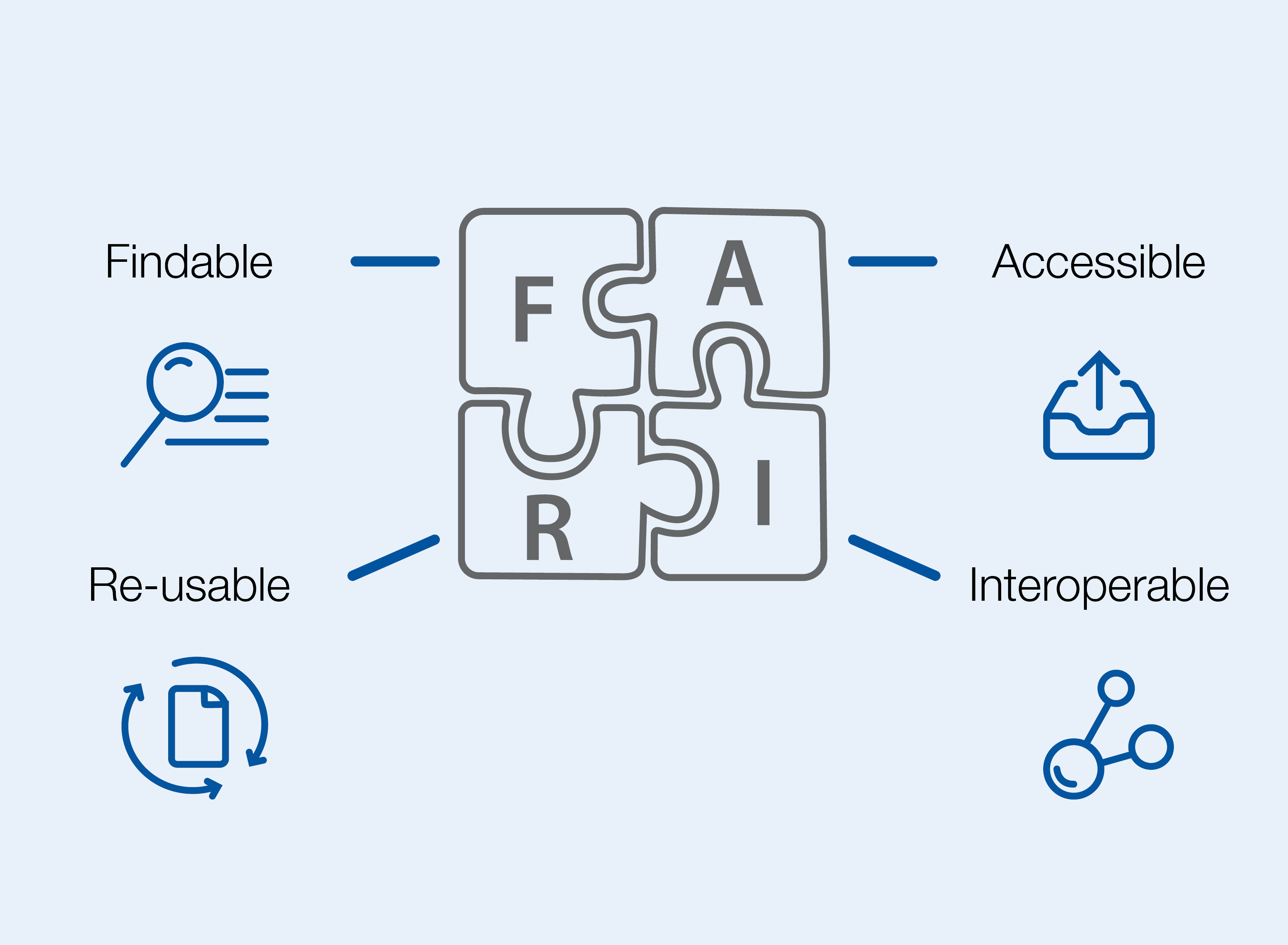FAIR-Principles
The FAIR Principles
Compliance with the FAIR criteria is essential for the research data management. The goal in this regard is to ensure that the produced research data can be found, for example by using PIDs. The accessibility to the research data should be provided at any point in the project and beyond. This also includes ensuring that data is not lost after staff members leave, rather that access continues to be available. The interoperability of research data is ensured by using a uniform language with regard to the vocabulary and also the ontologies. This is the only way to ensure that other researchers, without having performed the respective experiments themselves, can understand the content and interpret the data accordingly. In addition, it is important that metadata is stored for a clear and unambiguous understanding of the data. Examples of metadata are the name of the author, the date and reason for recording the data, and a possible publication date, etc. Any number of metadata can be stored with the research data to enable re-use by external researchers. For easy reuse, it is also recommended to choose common file formats so that no specific programs or the like are required to open them. The FAIR principles should be taken to heart at every step of the research data lifecycle so that the collected research data can be used in the long term and other researchers can also benefit from the results.
What are FAIR Digital Objects?
So-called FAIR Digital Objects (FDOs) describe any type of digital object, e.g. text documents, Excel spreadsheets or even databases, that meet the FAIR criteria. The background to this is that both data processing and data exchange should be standardized. So far, however, there has been a lack of predefined standards available to researchers. Instead, digital objects are often not discoverable by all or the readability of machines is limited. FAIR Digital Objects were created to solve this problem. When does a digital object become FAIR? A digital object becomes FAIR when the corresponding criteria are met. There is already an information text on the FAIR criteria, so here is just a brief summary:
F = Findable
A = Accessible
I = Interoperable
R = Reusable
Most important for digital objects is the adherence to standards, both in the collection, the analysis and the later exchange of the data. In order to find the corresponding research data including metadata when needed, so-called Persistent Identifiers (PIDs) have to be used. The description of the research data with corresponding metadata also regulates accessibility, i.e. whether, who and how the respective data can be accessed. If the data is protected, it must also be ensured that the person accessing it can only gain access after appropriate authentication.
What developments already exist in the area of FDOs?
Compliance with the FAIR criteria is not yet fully realized in all areas and is therefore still in the development phase. Therefore, FDOs are not yet used consistently in many areas. However, there are several projects to push this further, for example the Typed PID Maker, which offers help in creating, modifying and validating PIDs. Likewise the FAIR DO CookBook, in which "recipes" for the creation of PIDs, databases and also the search for corresponding PIDs can be found. In addition, the FAIR DOscope offers a way to display the PID record in a graphical and user-friendly way.
